Green Tea
Rodomi visi 10 produktai
-
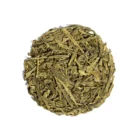 €7.0080gGreen Tea
€7.0080gGreen TeaChina Sencha
-
 -20% €5.60 €7.0080gGreen Tea
-20% €5.60 €7.0080gGreen TeaCup of Miracles
-20% €5.60 €7.0080gThis product is currently out of stock and unavailable. -
 €7.5080gGreen Tea
€7.5080gGreen TeaEarl Grey
-
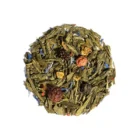 €8.0080gGreen Tea
€8.0080gGreen TeaFairy Dust
-
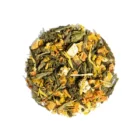 €7.5080gGreen Tea
€7.5080gGreen TeaFor Book Lovers
-
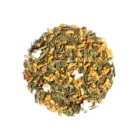 €7.0080gGreen Tea
€7.0080gGreen TeaGenmaicha
-
 €7.0080gGreen Tea
€7.0080gGreen TeaGunpowder
-
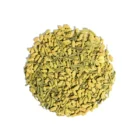 €8.0050gGreen Tea
€8.0050gGreen TeaJapan Matcha & Genmaicha
-
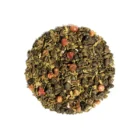 €7.0080gGreen Tea
€7.0080gGreen TeaMint Currant
-
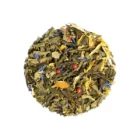 €8.0080gGreen Tea
€8.0080gGreen TeaTake a Moment to Yourself
Green tea is a beverage that has been considered the main daily drink in countries like China and Japan for centuries. Thanks to this extraordinary drink, you can become alert in the morning or enjoy it after a meal. If green tea has not been a part of your routine until now, it might become an essential part of your day.
Green tea is unoxidized tea made from the Camellia sinensis tea plant. Usually, this tea has a fresh herbal taste. Depending on the variety, its taste can be mild or strong, sweet, occasionally bitter, or even have a hint of seaweed. The unique flavor of green tea depends on the region of origin. Several countries produce green tea worldwide, including China and Japan, known for their high-quality green tea and ancient customs related to this drink.
How much green tea should you drink?
Some studies suggest you can drink from three to five cups a day. However, everyone consuming this tea should consider individual circumstances and, if applicable, health conditions since green tea is an invigorating beverage with a fair amount of caffeine. Nevertheless, it is a much healthier alternative for coffee lovers, as the caffeine’s effect lasts up to six hours.
How much caffeine is in green tea?
Each person’s body responds differently to caffeine, so it is essential to consume green tea (or anything else) in moderation.
Caffeine is a natural chemical found in more than 60 plant leaves, beans, and fruits, including tea leaves. It is a central nervous system stimulant used worldwide to enhance alertness and combat fatigue.
Caffeine consumption is also associated with health benefits, such as improved mood and brain function, increased metabolism, and better physical performance. People who consume too much caffeine may experience restlessness, insomnia, or irregular heartbeat, so it should be used responsibly.
How much caffeine is in a cup of green tea?
The average amount of caffeine in a regular cup of green tea is about 35 mg, but it can vary from 30 to 50 mg. Since caffeine in green tea occurs naturally, its amount depends heavily on the tea plant variety, growing conditions, and the processing and brewing method. For example, tea made from older leaves generally has less caffeine than tea made from younger leaves.
The caffeine content can also be influenced by the tea type and brewing method. For instance, tea packaged in tea bags typically contains more caffeine than loose-leaf tea.
Lastly, the longer you steep the tea and the hotter the water, the more caffeine will be released into your green tea cup.
Types of green tea
There are numerous varieties of green tea: sencha (Japanese tea), matcha (green tea powder), longjing (pan-fried tea from China), genmaicha, gyokuro, and more. Like any beverage, green tea has its unique flavor and aroma.
Most teas have different levels of nutrients due to how they were processed, grown, and roasted. For instance, Sencha is grown in sunlight, and its leaves are just steamed or pan-fried, while matcha is grown in the shade, and all its leaves are used – ground into powder.
Lithuanians enjoy green tea with jasmine, with lemon and ginseng, with ginger and lemon. For some, green tea with milk even replaces coffee!
Green tea in our assortment
China Sencha, Earl Grey, Genmaicha… and many unique and flavorful green tea blends can be found at the Chai Chai online store. We value quality, aesthetics, craftsmanship, and uniqueness, offering only the highest quality green tea.
How much does high-quality green tea cost?
The price of good green tea is highly competitive. In the Chai Chai online store, green tea is affordable, starting from just 6 euros for 80 grams!
Preparing green tea: a few tips Use water at the right temperature. Boiling water is usually too hot for brewing green tea. If the water is too hot, the tea’s taste will be bitter and astringent. If it’s too cold, you won’t extract the full flavor. The ideal water temperature for brewing green tea is between 80 to 90 degrees Celsius, while our Matcha tea variations are best brewed at 60 degrees Celsius. Timing is crucial during preparation. To prepare green tea correctly, it’s essential to know how long to steep the tea leaves in hot water. Our green teas should be steeped for 1 to 3 minutes, depending on the type of green tea you choose. For example, Genmaicha green tea is best steeped for 1-1.5 minutes, while Pienišką Oolong is best steeped for 2-3 minutes. If steeped for too short a time, the tea leaves won’t fully unfurl, resulting in an incomplete flavor. If steeped for too long, the tea may become bitter. Sweeten or flavor your green tea with milk. Some people prefer the authentic taste of green tea, but for others, it might be too sharp or bitter, so you can always add a sugar cube, a drop of honey, or another sweetener. In our assortment, you can also find Japan Aichi Matcha, which pairs wonderfully with milk. Use high-quality tea leaves. The fresher the tea leaves, the better the taste. Loose green tea has a richer and higher-quality flavor than tea bags. Make sure to use high-quality water. Just because water is drinkable doesn’t mean it’s ideal for brewing high-quality Japanese green tea. Soft water is the best choice for brewing delicious green tea because it has lower mineral content. Additionally, hard water can impart a metallic taste to your green tea.
What is the best green tea?
Here are some aspects to consider when evaluating green tea:
Leaf shape – it can be a reliable quality indicator, as it directly reflects the tea selection and production process; ideally, leaves should be tightly rolled; all leaves should look uniform, and if large leaves are mixed with small ones, it’s likely not top-quality tea; there should be very few tea dust; no stems or other unsuitable elements should be present. Leaf color: a bright green color with a sheen is preferable; the leaf should look fresh; sencha tea should not have an overly intense color; it should be dominated by green and yellow colors without any red tint. Leaf aroma: the scent of dry tea leaves should always be gentle and pleasant; it may contain notes of dry meadow herbs, flowers, berries, dried fruit; any unpleasant scents like mold, smoke, or iron indicate poor quality; if there’s almost no aroma, it’s likely that the green tea is stale; high-quality Japanese green teas like sencha, gyokuro, and matcha have a refreshing hint of seaweed aroma. Taste: a mild sweetness is preferable; the taste should be pleasant, harmonious, and well-balanced; green tea can be bitter for two reasons: low quality or incorrect water temperature during brewing.
Health and Beauty Benefits of Green Tea
The benefits of green tea for facial skin have been proven in clinical trials. According to a 2010 study from PubMed Central, the antioxidant power of green tea can help repair damage caused by ultraviolet rays. This is believed to help protect against skin cancer.
A 2003 study from the Medical College of Georgia in the USA found that the antioxidant EGCG, abundant in green tea, has the ability to rejuvenate dying skin cells. By protecting and regenerating your cells, this antioxidant can fight signs of aging and make your skin look healthier.
Women have also enjoyed green tea extracts, which are often an ingredient in various face masks. Such a mask is easy to make at home, using white clay and green tea extract or simply by steeping a small amount of green tea. It can help reduce skin redness and irritation.









